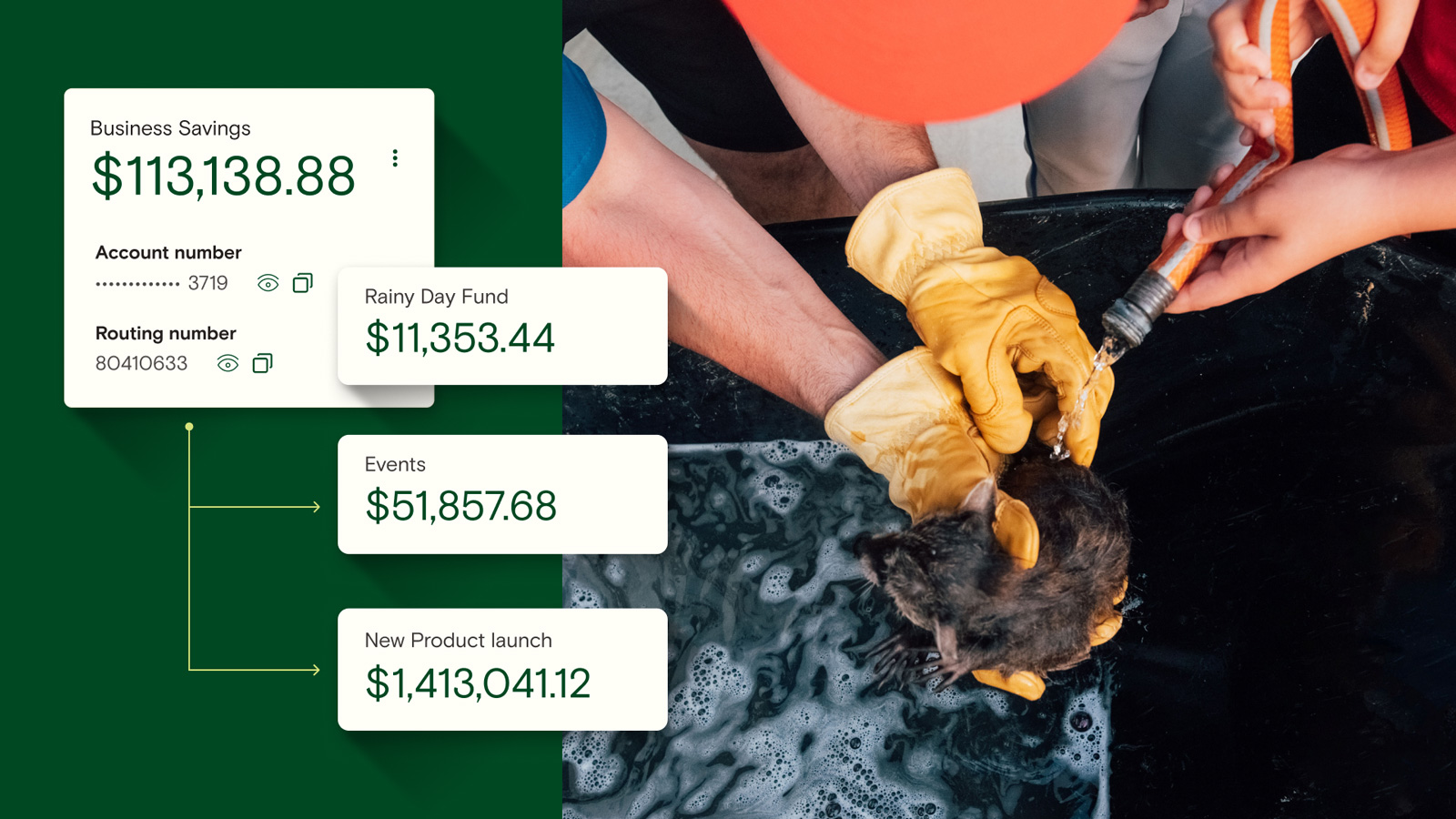Nonprofit organizations are often community cornerstones, providing vital resources to those in need. However, just like for-profit businesses, nonprofits need to be prepared for unexpected cash flow problems. A nonprofit reserve fund can provide a safety net when these challenges occur. 💵
But how much money can a nonprofit have in reserve, and how do you create an effective policy to manage reserve funds? In this article, we'll cover:
Webinar: Turn Your Business Into a Money-Making Machine
Unlock the secrets to transforming your business from a job into a profitable, cash-generating machine.
Register NowWhat is a nonprofit reserve?
A nonprofit reserve fund is essentially money that an organization sets aside to be used in the future. While it's typically in the form of liquid cash, it doesn't have to be solely in this form. Reserves can also include other assets like short-term investments—as long as they can be quickly converted into cash. 💸
Nonprofit reserves can be used for operational or capital reasons. They're typically used to pay for unexpected expenses, such as emergency repairs. Reserves might also be used to sustain operations during slow fundraising periods or finance large projects.
At Relay, we know that tight budgets and unpredictable donations can make it tough to save for the future. That’s why we help nonprofits and small businesses set up savings accounts and cash reserves—and it’s also why we’ve designed features like automated savings to help you grow reserves over time. 🌳🙌
Relay is an online banking and money management platform that offers nonprofits up to 20 free, individual checking accounts. Plus, you can open two savings accounts and earn 1-3% APY* on every dollar. Click here to learn about banking with Relay.
Where do nonprofit reserves come from?
Occasionally, a nonprofit will receive donations specifically to create or boost its operating reserve funds. More often, however, reserves are built up gradually by generating an unrestricted surplus and intentionally setting aside a portion of the extra cash as a reserve fund.
Types of nonprofit reserves
Nonprofits typically hold two types of reserves: operational or capital. Understanding the difference will help your organization manage its resources efficiently—whether you receive an opportunity to invest in a new program, or need to pivot quickly in an emergency.
🛠 Operating reserves
Nonprofit operating reserves are unrestricted funds set aside to cover operating expenses, such as payroll and rent. These funds should be saved for a “rainy day” — like businesses, nonprofits can also fall victim to unexpected income disruption or a budget shortfall. It's typically recommended that a nonprofit have at least three months of operating expenses in cash reserves.
🏦 Capital reserves
Capital reserves are funds that are set aside for long-term projects, investments, and other initiatives. These funds should be kept separate from the operational reserves so they can't inadvertently be used for everyday expenses. The amount of capital reserves will vary depending on each nonprofit's needs and goals.
How much money should my nonprofit have in reserves?
The amount that a nonprofit should set aside for its reserves will depend on several factors, including the organization's size and financial risks. Generally speaking, though, it's recommended that nonprofits maintain enough reserve funds to cover three months of operating expenses. 📊
That said, having a little bit more cash available isn't a bad idea — in fact, according to the Nonprofit Finance Fund’s 2022 State of the Nonprofit Sector Survey, 65% of nonprofits surveyed had four or more months of cash on hand in 2022. 💸
Can nonprofits have too much in reserve funds?
While maintaining a healthy reserve is crucial for the financial security of a nonprofit, there is such a thing as having too much in reserves.
For one, if a nonprofit accumulates reserves excessively and without a documented reason, it may draw scrutiny from the IRS. Authorities could begin to suspect that the organization is operating for profit rather than for its stated purpose. 🔎
Having an overly large reserve could also harm your nonprofit's fundraising efforts. Donors may question the need for their support if they see that your organization has a substantial amount of money in reserve.
Having too little in reserves can also harm your fundraising efforts, however. If donors review your financial statements and see that your organization is continually short of cash, they may not be willing to give. 😬
Ultimately, determining an appropriate reserve amount can be a difficult balancing act. ⚖️ The key is to maintain a reserve that can protect your organization from uncertainties — but isn’t so large that it raises questions about your nonprofit's financial management practices and fundraising needs.
Webinar: Turn Your Business Into a Money-Making Machine
Unlock the secrets to transforming your business from a job into a profitable, cash-generating machine.
Register NowHow to create a nonprofit reserve policy
Developing a clear reserve policy for your nonprofit can enhance your organization's financial health and foster sustainability. 📈 A well-defined policy will also ensure that nonprofit board members are on the same page about how reserve funds should be used.
Here are three steps you can take to create an effective nonprofit reserve policy:
Determine the purpose of your reserve funds. 💰 Do you need to save for long-term projects, cash flow emergencies, or something else? Depending on your organization's funding and mission, you may decide to have both operational and capital reserves.
Set a reserve goal based on the organization's operating budget. 📊 The target should be realistic enough to cover unexpected expenses but not so large that it detracts from the organization’s fundraising goals.
Create a plan for how reserve funds should be used. 📑 The board of directors should decide when it’s appropriate to access and utilize the reserve fund, and document these decisions in an official policy.
By creating an intentional reserve policy that reflects your nonprofit's budget and mission, you can maximize the impact of your organization's resources — while securing it from potential financial risks. 🤝
Where should you keep nonprofit reserves?
Once you've established how much money your organization wants to keep in reserve, the next step is deciding where to store the funds. 🗃
Opening a specific reserve account is crucial to ensure that your "rainy day" fund isn't accidentally used for day-to-day operational expenses. However, just like your personal emergency fund, it's not a good idea to invest your operating reserve fund—you'll want to be able to quickly access your savings in case of an emergency.
Ultimately, the best bank account for your nonprofit reserves 🏦 will allow you to earn interest on savings, avoid monthly maintenance fees, and easily access your funds when you need them.
💵 Relay: Get total cash flow clarity with online banking built for nonprofits
Relay is an online business banking and money management platform that offers no-fee checking and savings accounts. 💸 Whether your goal is to grow your reserves or simplify nonprofit budgeting, Relay can help.
Here’s why nonprofits love banking with Relay:
✅ Open 20 individual checking accounts: Organize income, expenses, and cash reserves with multiple checking accounts. You can create individual accounts to set aside grants, budget for day-to-day operating expenses, and beyond.
✅ No account fees or minimum balances: With no monthly fees, overdraft fees, or minimum balance requirements, Relay helps nonprofits avoid unnecessary costs.
✅ Automated savings: Relay helps you add more breathing room to your budget with automatic savings. Plus, you’ll earn 1-3% APY* on every dollar.
✅ Entirely online banking: Open checking and savings accounts, issue debit cards, and send and receive payments completely online—no in-person branch visits required.
✅ 50 virtual or physical debit cards: Create new debit cards for specific projects and expenses, and get instant access to virtual debit cards for online and mobile payments.
✅ Built for teams: Relay lets you set debit card spending limits and receive detailed data for all team spending. You can also invite your accountant, assistant, and other team members to Relay with secure, role-based logins.
✅ Streamlined bookkeeping: Relay allows you to sync detailed banking data directly into QuickBooks Online or Xero, making bookkeeping a breeze.
If you’re ready to use Relay for your nonprofit reserves, you can make the switch in 3 easy steps: open your account (completely online), transfer deposits, and move your payments. Plus, with our in-app switching tool, you won’t have to worry about leaving any transactions behind.
To get started with Relay for nonprofits, sign up here. 😎
Webinar: Turn Your Business Into a Money-Making Machine
Unlock the secrets to transforming your business from a job into a profitable, cash-generating machine.
Register NowFAQs about nonprofit reserve funds 💭
What happens when a nonprofit makes too much money?
When a nonprofit makes more money than it needs to cover its expenses, the excess funds should be transferred into the reserve account. This will help protect your organization against potential income disruptions or budget shortfalls in the future.
Will my nonprofit be taxed or penalized for having large reserve funds?
No, nonprofits are generally not taxed or penalized for having large reserve funds. As long as the nonprofit is using the money appropriately and can justify its need to have reserves, there should be no issue. However, nonprofits should avoid holding excessive reserves without a clear, documented purpose, as it may attract scrutiny from tax authorities and deter donors.
Are endowment funds a type of reserve fund?
Endowment funds differ from reserve funds in their usage and restrictions. An endowment typically made up of donations or grants, contains stipulations on how it may be used. Unlike reserve funds, endowments are designed to preserve the original amount (the principal), allowing it to grow over time. The annual income generated can be used for specific programs, operations, or purposes defined by the donor(s) or the board of directors.




